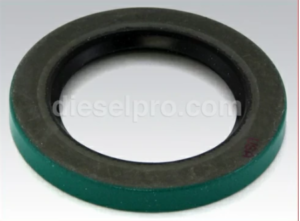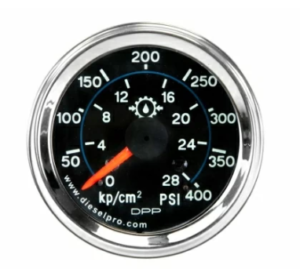
Key Points in This Article
- Operating Instructions for Twin Disc MG514C Marine Gear
- Start-up Procedures for Twin Disc MG514C Marine Gear
- Gear Shifting Instructions for Twin Disc MG514C Marine Gear
- Recommended Operating Practices for Twin Disc MG514C Marine Gear
- Monitoring Performance During Operation
- Conclusion
The Twin Disc MG514C Marine Gear is a precision-engineered marine transmission system for reliable performance in recreational and commercial marine vessels. Correct operation is essential to ensure the longevity and optimal functionality of the transmission. Proper handling minimizes wear, reduces downtime, and enhances safety during vessel operations.
This comprehensive guide provides detailed operating instructions, covering start-up procedures, gear-shifting techniques, best operational practices, and performance monitoring. Following these guidelines will maximize the lifespan of your Twin Disc MG514C and ensure consistent, efficient performance under varying marine conditions.
Parts Catalog for Twin Disc MG514C Marine Transmissions
Rebuilt Twin Disc MG514C Marine Transmissions
Bearings For Twin Disc MG514C Marine Transmissions
Plate Kit For Twin Disc MG514C Marine Transmission
Gasket Kits For Twin Disc MG514C Marine Transmission
Start-up Procedures for Twin Disc MG514C Marine Gear
Starting the Twin Disc MG514C correctly is vital to ensuring efficient operation and preventing damage to internal components. Incorrect start-up can lead to operational issues, premature wear, and even catastrophic failure. The following steps provide a detailed, systematic approach to starting up the Twin Disc MG514C Marine Gear safely.
1. Pre-Start-up Inspection

Before starting the engine and engaging the marine gear, conduct a thorough inspection of the system to ensure that all components are ready for operation.
- Check Oil Levels: Use the dipstick to verify that the oil level in the transmission is within the recommended range. Low oil levels can lead to inadequate lubrication and overheating.
- Inspect for Leaks: Look for any signs of hydraulic fluid or oil leaks around seals, hoses, and fittings.
- Visual Inspection: Ensure that the gear and associated components, including the engine and propeller shaft, are free from visible damage or obstructions.
- Inspect Mounting Bolts: Verify that all mounting bolts are secure and torqued to manufacturer specifications.
- Check Hydraulic System: Ensure that hydraulic hoses are securely connected and free of leaks.
2. Engine Warm-up

- Start the Engine: Begin by starting the vessel’s engine. Allow it to idle to build up oil pressure within the lubrication system.
- Monitor Oil Pressure: Use the oil pressure gauge to ensure the pressure reaches the recommended levels. Operating the transmission without sufficient oil pressure can lead to internal damage.
- Warm-up Duration: Allow the engine to warm up for at least 5 to 10 minutes to ensure the oil reaches the correct temperature and viscosity. This step is critical in colder environments where oil may thicken.
- Check for Unusual Noises: Listen for any unusual sounds during warm-up, such as knocking, grinding, or excessive vibration, which could indicate mechanical issues.
3. Initial Transmission Check
- Idle Position: Keep the engine in an idle position and ensure the transmission control lever is in neutral.
- Hydraulic Engagement Test: Engage the hydraulic system and check for smooth operation. If the system is sluggish, recheck oil levels and system pressures.
- Verify Propeller Shaft Rotation: Before shifting gears, ensure that the propeller shaft is free to rotate and is not obstructed.
4. Pre-Operational Safety Check
- Communication Check: Ensure communication with all crew members is established, especially when working in confined spaces.
- Area Clearance: Confirm that the area around the propeller is clear of any obstacles, debris, or personnel.
- Check Controls: Test all control mechanisms to ensure they are responsive and functioning properly.
Gear Shifting Instructions for Twin Disc MG514C Marine Gear

Smooth and accurate gear shifting is essential for maintaining transmission health and ensuring seamless vessel operation. The Twin Disc MG14C offers robust shifting capabilities, but improper handling can lead to gear damage, excessive wear, and unsafe conditions.
1. Basic Gear Shifting Principles
- Neutral Position: Always begin with the transmission control lever in the neutral position to prevent sudden engagement that could shock the system.
- Controlled Engagement: Engage gears smoothly, avoiding abrupt movements that could damage the gear assembly.
- Avoid Over-Speeding: Never shift gears at high engine speeds. Always reduce engine RPM to idle before changing gears.
2. Forward Gear Engagement
- Set to Idle: Ensure the engine is at idle speed.
- Shift Smoothly: Move the control lever to the forward gear position in a smooth, controlled manner.
- Observe for Engagement: Listen for the engagement sound and observe the propeller shaft for rotation.
- Check for Smooth Transition: If engagement is rough, return to neutral and repeat the process after verifying hydraulic pressures.
3. Reverse Gear Engagement
- Return to Neutral: Always move the control lever back to neutral and wait a few seconds to allow the system to stabilize.
- Shift to Reverse: Move the control lever into the reverse position smoothly.
- Monitor Engagement: Listen for the engagement click and watch the propeller shaft for proper rotation.
4. Transitioning Between Gears
- Neutral Pause: Always return to neutral and allow the gear system to settle for 2-3 seconds before shifting between forward and reverse.
- Smooth Transitions: Avoid rapid or forceful shifts. Abrupt transitions can cause hydraulic shocks and damage gear teeth.
- Throttle Management: Keep the throttle at idle during transitions to avoid excessive strain.
5. Emergency Shifting Procedures
In emergency situations where rapid maneuvering is required:
- Gradual Deceleration: Reduce engine speed as quickly as possible before shifting.
- Engage Carefully: While urgency is required, avoid forcing the gear lever into position to prevent mechanical damage.
- Monitor System Pressure: Ensure hydraulic pressures remain within operational range to avoid gear slippage.
Recommended Operating Practices for Twin Disc MG514C Marine Gear
Adhering to best operating practices will significantly enhance the longevity and reliability of the Twin Disc MG514C. Operators should prioritize smooth transitions, regular performance checks, and adherence to torque specifications.
1. Warm-Up and Cool-Down Practices
- Initial Warm-Up: Always allow the engine and transmission to warm up gradually before applying full load. This ensures proper oil flow and reduces mechanical strain.
- Post-Operation Cool-Down: Allow the engine to idle for several minutes before shutting down. This helps to dissipate residual heat and maintain oil quality.
2. Optimal Load Management
- Avoid Overloading: Do not exceed the manufacturer’s recommended torque limits. Overloading can lead to gear slippage, overheating, and mechanical failures.
- Gradual Load Increase: Gradually increase engine speed and load. Sudden load changes can cause hydraulic shocks.
3. Regular System Monitoring
- Monitor Gauges: Continuously monitor oil pressure, temperature, and system RPMs.
- Listen for Anomalies: Pay attention to unusual noises such as grinding, knocking, or vibrations.
- Check for Leaks: Visually inspect the transmission and hydraulic lines for leaks.
4. Smooth Gear Engagement
- Consistent Operation: Always use smooth, consistent movements when engaging gears.
- Avoid Aggressive Shifts: Refrain from aggressive gear changes to prevent mechanical strain.
5. Environmental Considerations
- Saltwater Protection: Regularly rinse the transmission with fresh water to remove salt residue, which can cause corrosion.
- Extreme Temperatures: Adjust oil viscosity according to environmental conditions.
Monitoring Performance During Operation
Consistent performance monitoring is crucial to detecting potential issues early and ensuring the Twin Disc MG514C operates at peak efficiency.
1. Oil Pressure and Temperature Monitoring

- Check Regularly: Continuously monitor oil pressure and temperature gauges during operation.
- Normal Ranges: Oil pressure should remain between 250-350 PSI, and temperature should be within the specified range to prevent overheating.
- Signs of Trouble: A sudden drop in pressure or a spike in temperature may indicate leaks, blockages, or mechanical issues.
2. Vibration and Noise Detection
- Monitor Vibrations: Excessive vibration could indicate misalignment, bearing wear, or loose bolts.
- Listen for Noise: Grinding, whining, or knocking sounds may point to gear wear or lubrication failure.
- Immediate Response: If irregularities are detected, reduce speed and safely stop to inspect the issue.
3. Gear Engagement and Slippage
- Smooth Engagement: Shifts should be smooth with a noticeable but gentle engagement click.
- Slippage Detection: If the gear fails to engage properly or slips during operation, check hydraulic pressure and alignment.
- Test Reverse Gear: Ensure reverse gear engages smoothly without delays.
4. Hydraulic System Checks
- Check Fluid Levels: Regularly inspect hydraulic fluid levels and top off if necessary.
- Inspect Hoses and Seals: Look for wear, cracks, or leaks in hydraulic components.
- Pressure Consistency: Fluctuating hydraulic pressure can indicate internal leaks or worn components.
5. Routine Performance Logs
- Record Data: Keep a log of oil levels, pressures, temperatures, and any anomalies observed during operation.
- Trend Analysis: Use performance logs to identify gradual changes or declines in performance over time.
Conclusion
Proper operation of the Twin Disc MG514C Marine Gear ensures consistent performance, safety, and longevity. By adhering to these start-up procedures, gear-shifting techniques, and performance monitoring practices, operators can avoid premature wear, mechanical failures, and safety hazards.
Operators should consistently monitor oil levels, engage gears smoothly, and avoid overloading the system. Immediate attention to anomalies such as abnormal noise, vibrations, or fluctuating pressures will minimize long-term damage and costly repairs. For best results, follow the recommended operating procedures outlined in this guide and consult with professionals for advanced troubleshooting or repairs.

Rebuilt Twin Disc MG514C Marine Transmissions
Bearings For Twin Disc MG514C Marine Transmissions
Plate Kit For Twin Disc MG514C Marine Transmission
Gasket Kits For Twin Disc MG514C Marine Transmission
Videos About Twin Disc Transmissions
6 Reasons Your Twin Disc Transmission Has Low Oil Pressure
7 Reasons Your Twin Disc Transmission Is Overheating
3 Reasons Your Clutch Plates in Your Twin Disc Transmission Are Making Excessive Noise
Bull Gear On A Twin Disc Transmission
Rebuilt Twin Disc Transmissions



 Free US Calls: 1-888-433-4735
Free US Calls: 1-888-433-4735 International: 305-545-5588
International: 305-545-5588